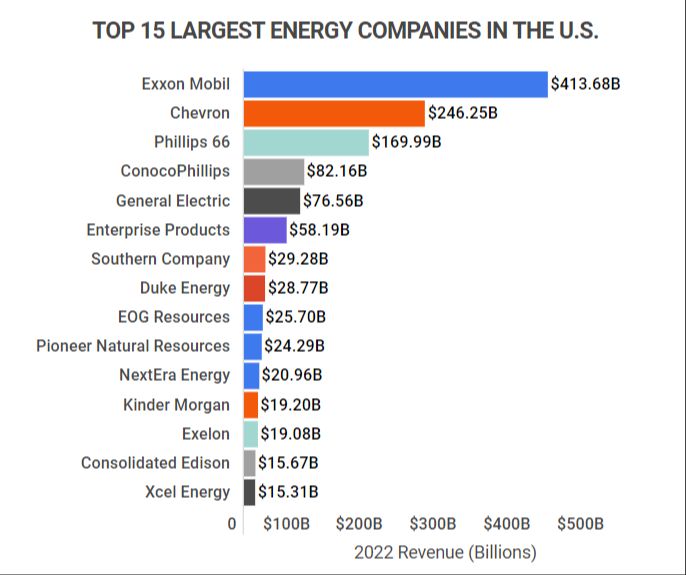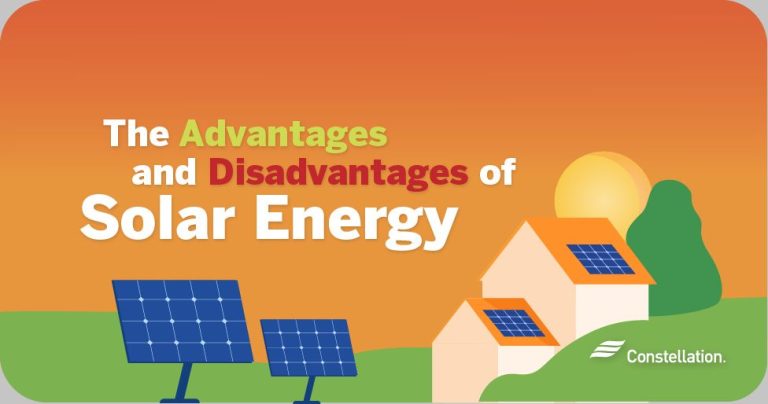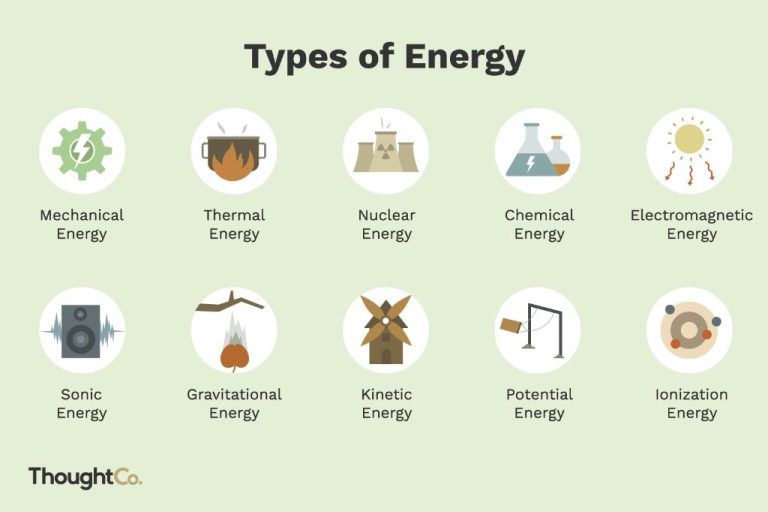What Is The Biggest Energy Producer In The Us?

The United States is one of the world’s largest producers and consumers of energy. This article will provide an overview of the major energy sources used for electricity generation in the U.S., including fossil fuels like coal, natural gas, and petroleum, as well as nuclear, hydroelectric, wind, solar, and geothermal power. We will examine the contribution of each energy source to the nation’s overall energy mix and electricity generation capacity. Key factors influencing the types of energy produced and consumed in the U.S., such as government policy, technological innovations, and market prices will also be discussed.
By the end, you will have a comprehensive understanding of the U.S. energy production landscape, including the main energy sources, their relative scale and growth trends, and the forces shaping America’s energy future.
Coal
Coal is currently the largest energy producer in the United States, providing about 20% of total energy production according to the U.S. Energy Information Administration (EIA) [1]. In 2019, about 756 million short tons of coal were mined in the U.S., with most coal production occurring east of the Mississippi River in Appalachia and the Interior coal regions [2].
The majority of coal produced in the U.S. is used to generate electricity, providing about 20% of U.S. electricity in 2019. Coal is also an essential component in the production of steel and cement. The steel industry relies on metallurgical coal to manufacture coke needed for iron and steel production [3].
The top five coal-producing states in 2019 were Wyoming, West Virginia, Pennsylvania, Illinois, and Kentucky. Wyoming produced over 40% of the nation’s coal, mostly mined from the Powder River Basin. West Virginia produced the second most coal, accounting for about 13% of U.S. production from mines in the Appalachian region [4].
Natural Gas
Natural gas is the second largest source of energy production in the United States, accounting for about 34% of total U.S. energy production in 2021 according to the U.S. Energy Information Administration (Short-Term Energy Outlook). U.S. natural gas production reached a record high of 34.9 trillion cubic feet in 2019, but declined in 2020 due to reduced economic activity during the COVID-19 pandemic. In 2021, dry natural gas production rebounded to 33.6 trillion cubic feet and is forecast to continue growing by 1-2% through 2024 (Short-Term Energy Outlook).
Natural gas is used for electricity generation, heating homes and businesses, fueling industrial processes, and as a transportation fuel. About 40% of the natural gas consumed in the U.S. in 2021 went towards electricity generation. Residential and commercial buildings accounted for over 25% of natural gas usage. The industrial sector, including manufacturing, agriculture, and gas extraction, accounted for about 30%. Only a small portion, around 5%, went towards transportation fuel (largely compressed natural gas vehicles).
The major natural gas producing regions in the U.S. are the Appalachian Basin in the Northeast, the Permian Basin in western Texas and southeastern New Mexico, the Gulf Coast region along Texas and Louisiana, and Midcontinent regions like the Anadarko Basin in Oklahoma. Texas accounted for about 29% of U.S. marketed natural gas production in 2020, followed by Pennsylvania at 21% and Louisiana at 8%.
Petroleum
According to EIA data, petroleum was the largest energy producer in the U.S. in 2021, accounting for 35% of the country’s energy production. The U.S. produced an average of 16.657 million barrels of petroleum per day in 2021. Petroleum is composed of crude oil and refined petroleum products like gasoline, diesel fuel, heating oil, jet fuel, and petrochemical feedstocks.
The main uses of petroleum in the U.S. are transportation, industrial, residential and commercial. According to the EIA, in 2021 transportation accounted for 71% of U.S. petroleum consumption. Petroleum is also used as a raw material for many chemical products including pharmaceuticals, fertilizers, insecticides, and plastics.
The top petroleum producing states in 2021 were Texas (5.6 million barrels per day), New Mexico (1.8 million barrels per day), North Dakota (1.1 million barrels per day), Oklahoma (0.9 million barrels per day) and Colorado (0.7 million barrels per day) (https://www.eia.gov/tools/a-z/index.php?id=o).
Nuclear
Nuclear power plants play an important role in U.S. electricity generation, consistently providing about 20% of total annual generation according to the US Energy Information Administration. As of January 2022, the United States had 93 nuclear reactors in 28 states, operated by 30 different power companies.
Some of the largest nuclear power plants in the U.S. include the Palo Verde plant in Arizona, the largest nuclear plant in the country with three reactors and over 4,000 megawatts of capacity. Other major plants are found in states like Illinois, Pennsylvania, and South Carolina.
While nuclear power is efficient and does not produce greenhouse gas emissions, there are concerns around safety and radioactive waste storage. Nuclear accidents like Three Mile Island, Chernobyl, and Fukushima have fueled public fear about meltdowns and radiation leaks. Stringent regulations and oversight have improved safety, but waste storage remains an issue, as there is no permanent repository for spent nuclear fuel in the U.S.
Hydroelectric
Hydroelectric power is generated from flowing water that turns turbines connected to generators. According to the U.S. Energy Information Administration, hydroelectric power accounted for 6.8% of total U.S. utility-scale electricity generation and 36.1% of electricity generation from renewables in 2022 (Source).
As of 2022, the United States had over 2,200 hydroelectric power plants with a total generating capacity of over 80,000 megawatts, making it one of the largest producers of hydroelectricity in the world. Major facilities include the Grand Coulee Dam on the Columbia River in Washington state, which is the largest hydroelectric power producer in the U.S. with over 6,800 megawatts of capacity.
While hydroelectric power is renewable and produces minimal emissions, large dams can have major environmental impacts. Flooding land for a reservoir displaces communities and habitats, dams obstruct fish migration routes, and water flow changes can impact downstream ecosystems. However, technology improvements and more strategic dam placements have helped reduce the environmental effects of new hydroelectric projects (Source).
Wind
Wind energy has seen tremendous growth in the United States over the past decade. According to the U.S. Energy Information Administration, wind power capacity grew from 25 gigawatts in 2010 to 122 gigawatts in 2021[1]. This rapid expansion can be attributed to improvements in wind turbine technology, federal tax incentives, and state-level renewable portfolio standards.
The top states for wind energy production are Texas, Iowa, Oklahoma, Kansas, and Illinois. Texas leads the nation with over 30,000 megawatts of installed wind capacity[2]. The state’s ample wind resources, available land, and energy market deregulation make it an ideal location for wind farms.
There is also great potential for offshore wind energy development in the United States. Offshore wind farms currently exist off the coasts of Rhode Island and North Carolina, but many more are in the planning stages. Areas with strong offshore winds near major coastal load centers like New England and the Mid-Atlantic region are especially promising for offshore wind energy production.
Solar
Solar energy production in the U.S. has grown exponentially in recent years thanks to rapidly declining costs and supportive policies. According to the U.S. Energy Information Administration, total U.S. solar energy production increased by 23% in 2020 to reach 1.2 quadrillion BTUs (1). This accounted for nearly 3% of total U.S. energy production from all sources that year. The Solar Energy Industries Association reports that total installed solar capacity in the U.S. has grown from just 1.2 gigawatts in 2008 to over 100 gigawatts in 2021, an increase of over 8,000% (2).
The top states for solar energy production are California, Arizona, Florida, Texas, and North Carolina. Together they account for over half of total U.S. solar energy generation. The sunny climate in these states make them ideal for installing large solar farms. California alone accounted for over 40% of U.S. solar generation in 2020 (1).
The dramatic growth in solar can be attributed to rapidly declining costs. According to Lazard’s levelized cost of energy analysis, the cost to install utility-scale solar has dropped 88% over the last decade, making it cost competitive with conventional energy sources (2). Continued technological improvements and economies of scale should help drive costs even lower in the future.
(1) https://www.eia.gov/todayinenergy/detail.php?id=47856
(2) https://www.seia.org/solar-industry-research-data
Geothermal
Geothermal energy comes from harnessing heat from beneath the Earth’s surface. The United States is the global leader in geothermal electricity generation capacity, with over 3.7 gigawatts of installed capacity as of 2019. However, this still only accounts for 0.4% of total utility-scale electricity generation in the country. The Other Major Renewables reports that geothermal power generation could expand substantially, as the estimated potential capacity is over 9 GW in the western states alone. Additional uses for geothermal energy include district heating systems and various industrial processes.
The U.S. Department of Energy estimates the potential for new geothermal power capacity in the U.S. could realistically reach 60 gigawatts by 2050. With supportive policies and technological advances, geothermal could provide a reliable, renewable baseload power source and play a greater role in the nation’s energy mix. Key factors for growth include enhanced geothermal systems, improved exploration and drilling technologies, and innovative ways to use geothermal for heating and industry.
Conclusion
In summary, the main energy sources in the US are coal, natural gas, petroleum, nuclear, hydroelectric, wind, solar, and geothermal. Currently, the largest energy producer in the US is natural gas. Natural gas surpassed coal as the top producer of electricity in the US in 2016. Going forward, natural gas and renewable energy sources like wind and solar are expected to continue increasing their share of US electricity generation.






